
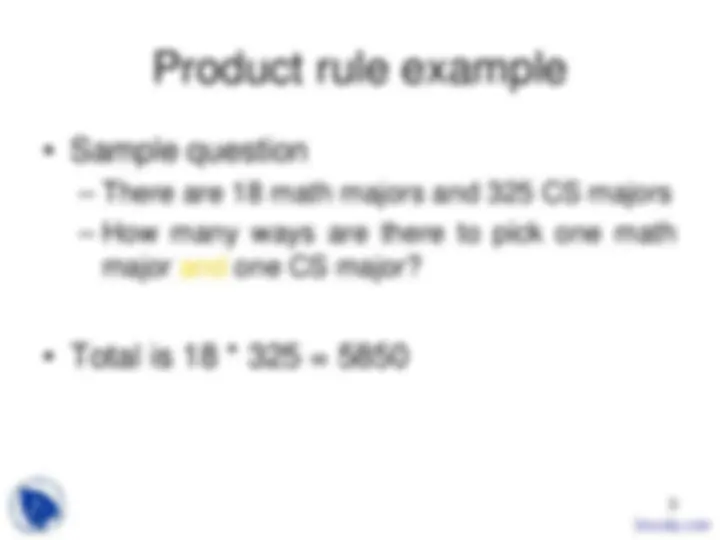
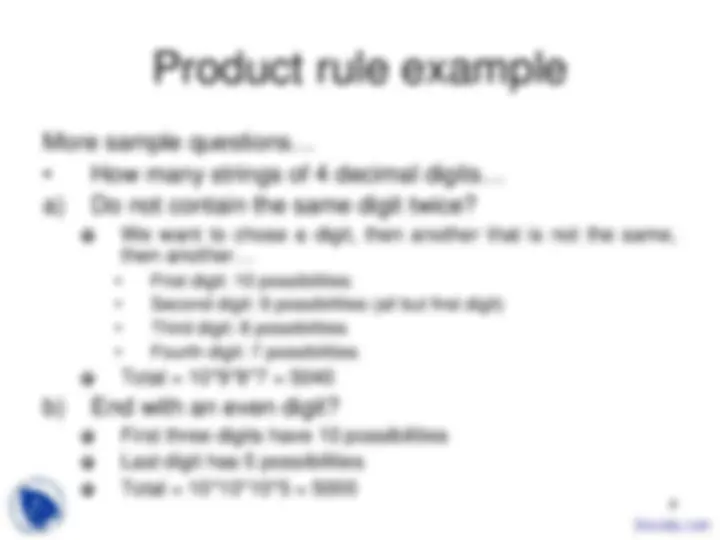
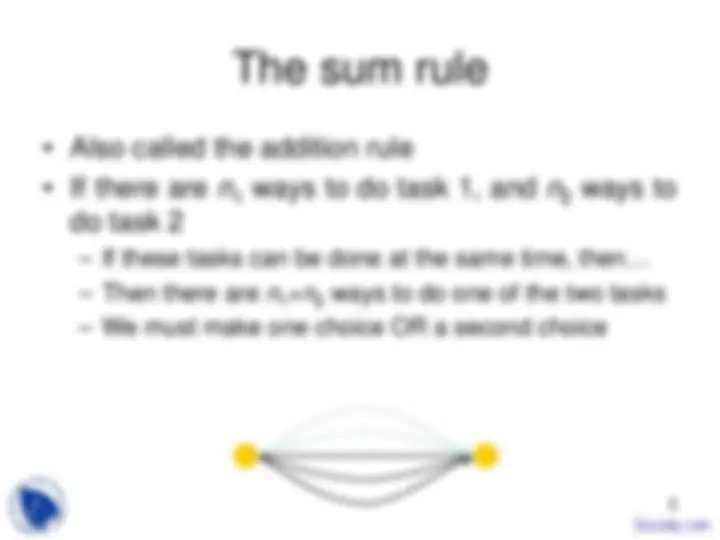
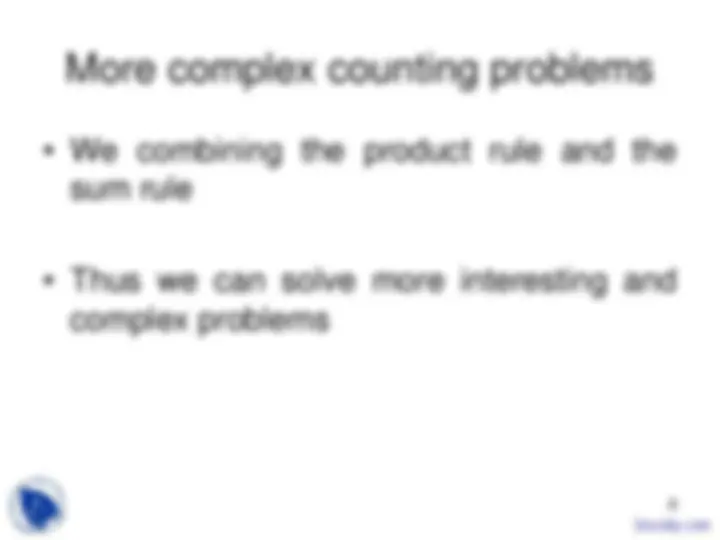
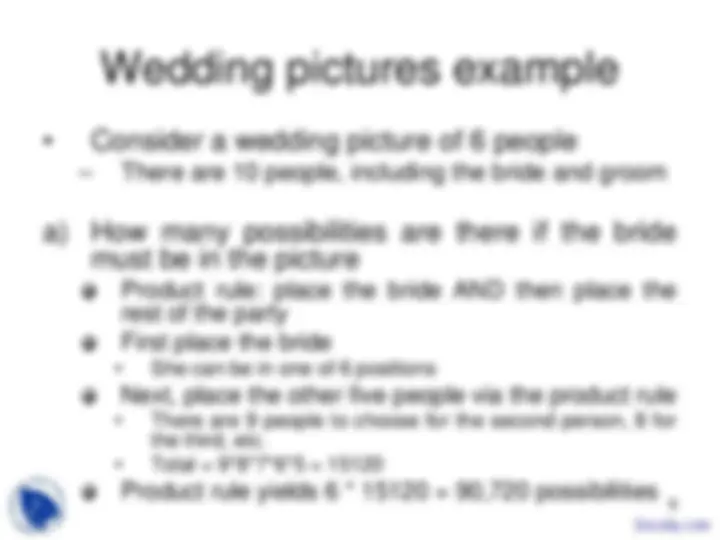
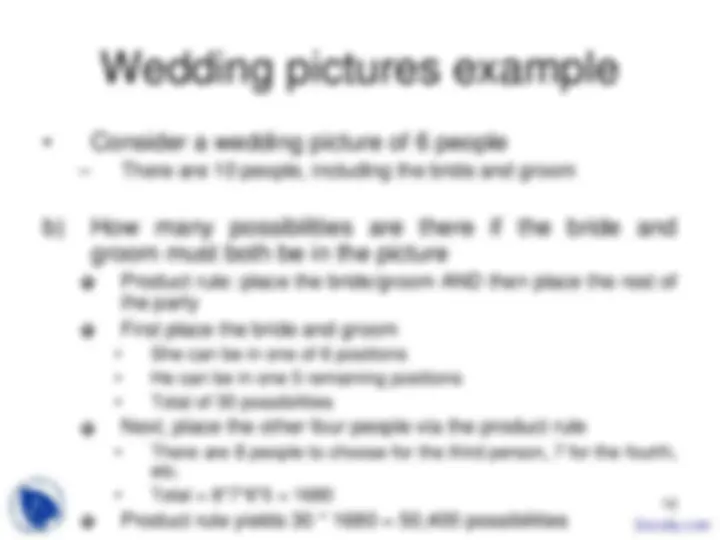
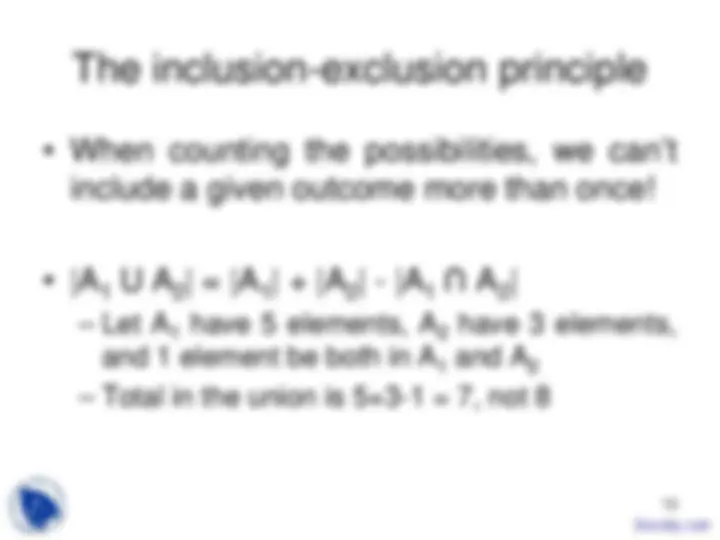
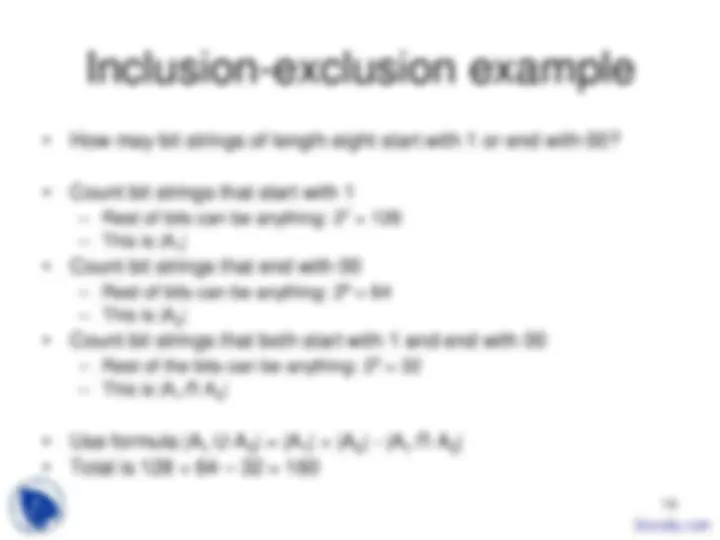
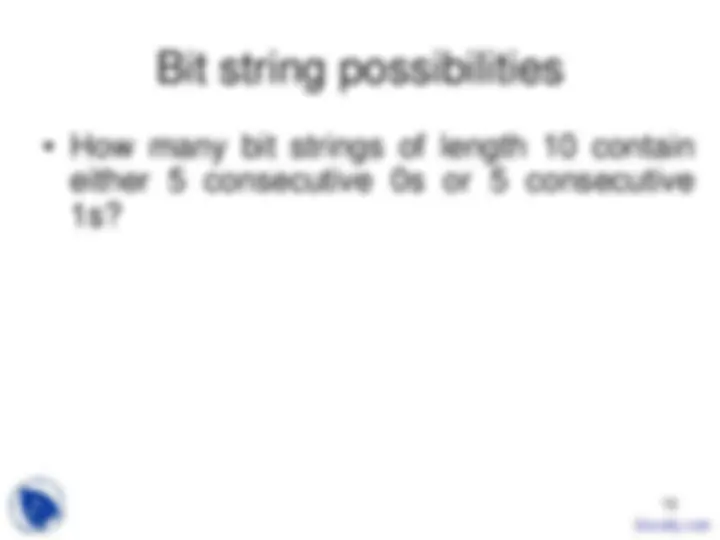
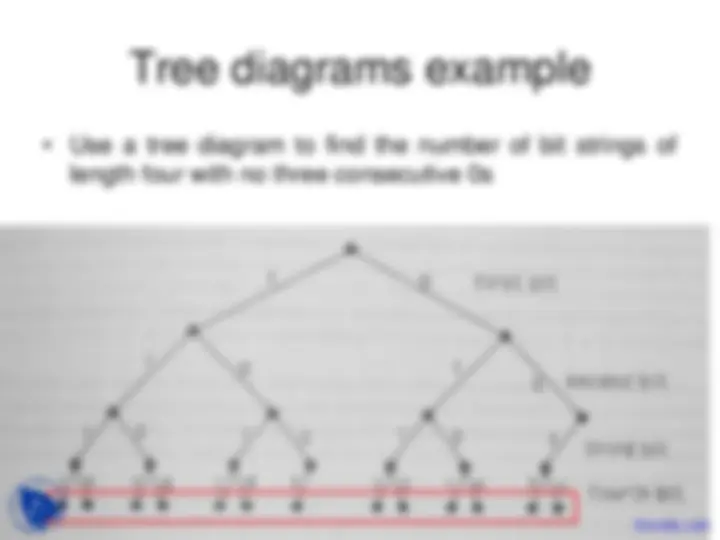
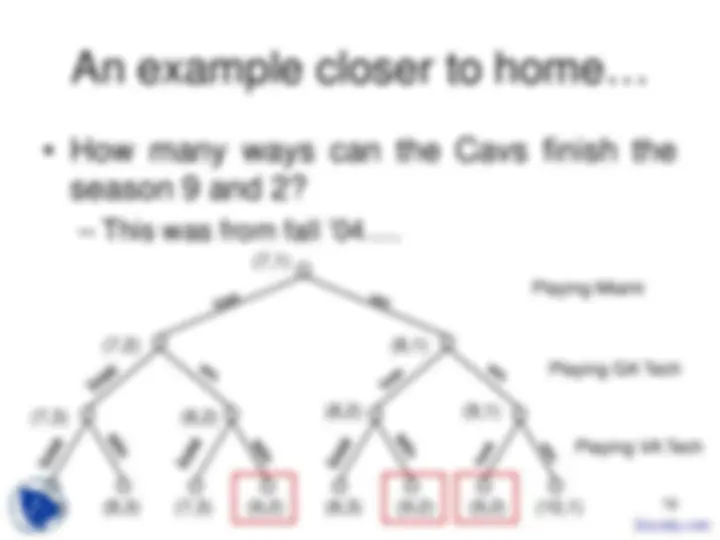


Study with the several resources on Docsity

Earn points by helping other students or get them with a premium plan


Prepare for your exams
Study with the several resources on Docsity

Earn points to download
Earn points by helping other students or get them with a premium plan
Community
Ask the community for help and clear up your study doubts
Discover the best universities in your country according to Docsity users
Free resources
Download our free guides on studying techniques, anxiety management strategies, and thesis advice from Docsity tutors
During the study of discrete mathematics, I found this course very informative and applicable.The main points in these lecture slides are:Basics of Counting, Product Rule, Multiplication Rule, Product Rule Example, Sum Rule, Addition Rule, Sum Rule Example, Complex Counting Problems, Wedding Pictures Example, Inclusion-Exclusion Principle, Bit String Possibilities
Typology: Slides
1 / 19

This page cannot be seen from the preview
Don't miss anything!












1
2
4
5
7
8
More complex counting problems
sum rule
complex problems
10
11
Sum rule: place only the bride
13
The inclusion-exclusion principle
include a given outcome more than once!
and 1 element be both in A 1 and A 2
14
16
0000011111 and 1111100000
17
19
Playing Miami
Playing GA Tech
Playing VA Tech